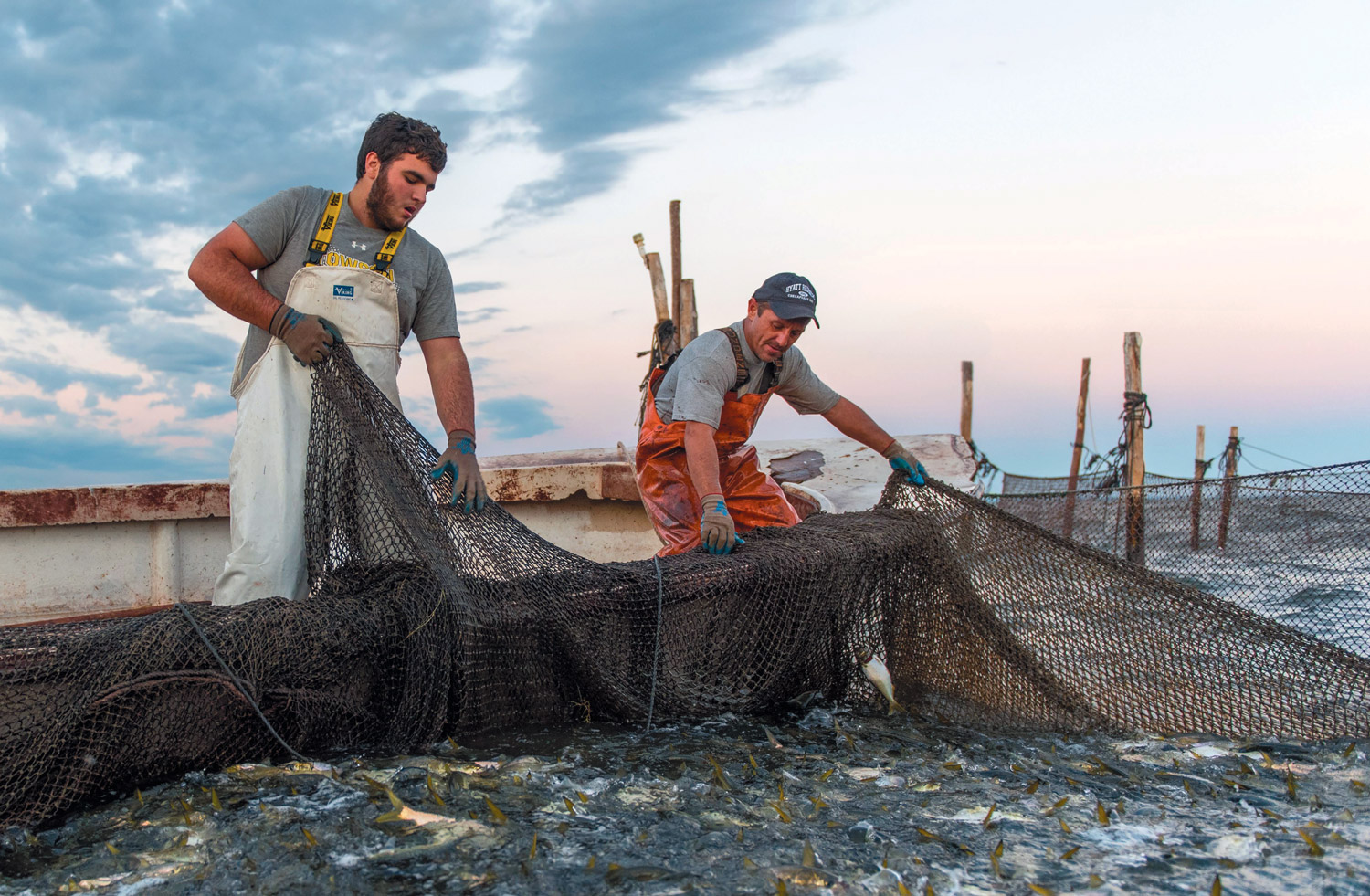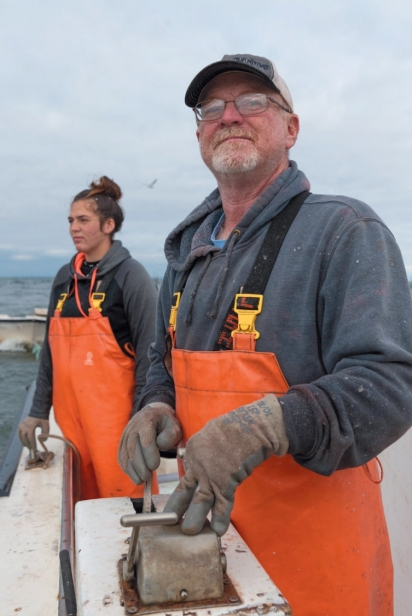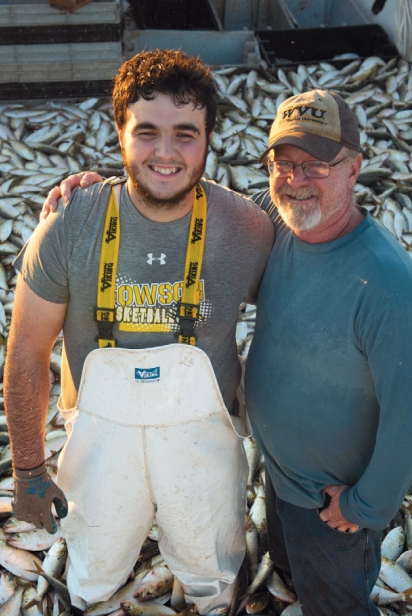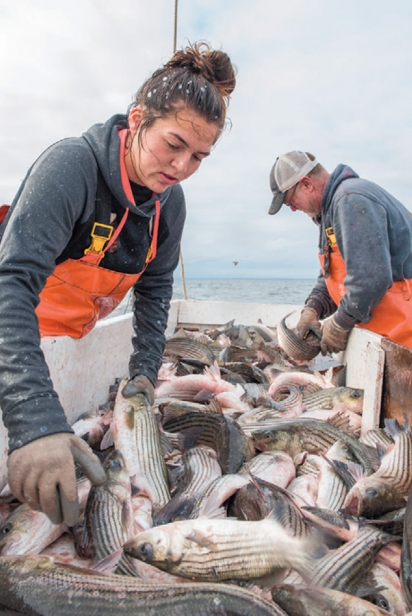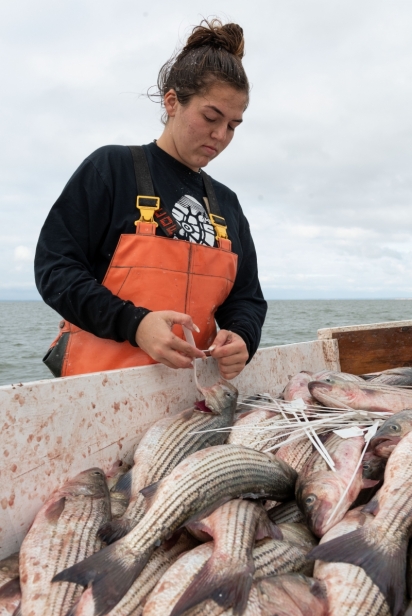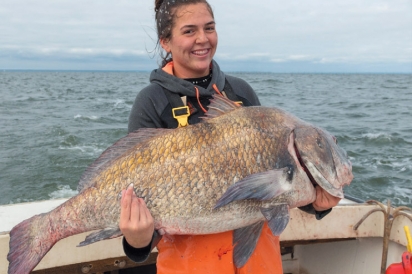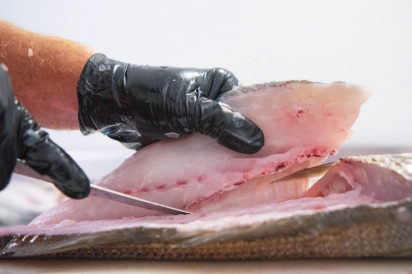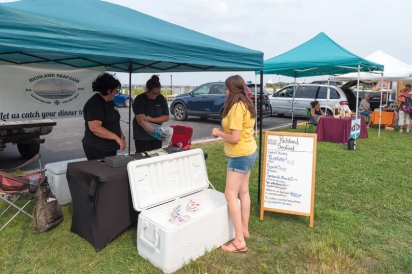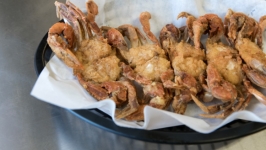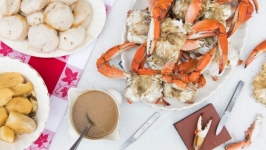Fishing Family
On Hoopers Island, Maryland, the Lewis Family continues a 6-generation tradition of fishing the Chesapeake Bay.
Commercial fishing runs deep in the Lewis family. The family’s patriarch, Burl, is a fifth generation Chesapeake Bay waterman. From his early childhood days on Hoopers Island, Burl recalls working alongside his father and grandfather to fish their pound nets. Now, Burl’s children are among the sixth generation of the Lewis family to work on the water.
Burl’s two youngest children, Zack and Sarah, started tagging along as soon as they were big enough to pick up a fish, just like Burl did when he was young. From there, Zack and Sarah assisted Burl throughout their teens, helping him tend to the nets on the weekends or early in the morning before school each day. Although Zack and Sarah are both enrolled in college now, they still lend Burl a hand any time they are home in Church Creek on weekends, holidays or for summer break.
Burl, Zack and Sarah can trace their roots back to lower Hoopers Island in Dorchester County, where the town of Applegarth once stood. Although all that remains of Applegarth today is two cemeteries that sit on ridges of high ground, the town was once home to one of the largest fleets of skipjacks on the Bay, along with seafood packing houses and businesses that supported the commercial fishing industry.
Like many island communities at that time, Applegarth was utterly dependent on the water to survive. By the 1920s, however, the town met its fate at the hands of the Chesapeake Bay as erosion, a series of devastating storms, and encroaching water forced the last residents to abandon their town. True to their nature, though, most families from Applegarth continued working in the seafood industry even after relocating to other parts of Hoopers or the mainland.
Like his ancestors, Burl is no stranger to learning to adapt in order to survive. When the COVID-19 pandemic crippled the seafood industry’s supply chain in March 2020, the prices of fish nearly hit rock bottom. Burl recalls the price of striped bass dropping as low as $1.50 per pound, when just months before the pandemic hit, the Bay’s most popular fish was going for as much as $5 per pound. Burl knew that he had to learn to navigate the new marketplace and find a way to get a reasonable price for his “good fish.” Of course, to watermen, a “good fish” is any edible fish that can be sold to wholesalers or retailers. Striped bass, Spanish mackerel, snakehead, spotted sea trout and bluefish are among the most common, while more unique summertime visitors to the Chesapeake like cobia, pompano, sheepshead and ribbonfish are also regularly caught in the pound nets.
Burl decided that the best way to earn money for these “good fish” was to sell them directly to the consumer. So, Burl and his wife, Denise, established Richland Seafood, named after one of Burl’s pound net sites that has been handed down from generation to generation. Richland Seafood started out selling whole fish, but Burl and Denise quickly realized that most consumers preferred the convenience of fish that had already been scaled and filleted.
Once again, Burl would need to adapt—in order to process fish legally, he needed access to a commercial cutting room that was certified by the Maryland Department of Health. To his luck, one of Burl’s childhood friends, another full-time waterman, had the perfect space available for him. Now, Richland Seafood is certified to sell its fish fillets at the Cambridge and St. Michaels farmers’ markets.
Like the work of past generations, running Richland Seafood is a team effort. As Burl brings in the catch from the net, he lets Denise know what to advertise in their bi-weekly Facebook posts, “What’s in the Net.” Through these posts, Denise is able to pre-sell some of the catch to her network of customers before the fish are even landed. Once the fish hit the dock, Burl and Sarah get to work scaling, filleting, bagging and labeling the fish. Denise and Sarah then carry the fish to the farmers’ markets, where they staff the Richland Seafood stand.
Follow Richland Seafood on Facebook to see “What’s in the Net”
Look for the Richland Seafood booth at these farmers’ markets:
• Cambridge, Maryland, April to November, Thursday 3-6pm
• St. Michaels, Maryland, April to November, Saturday 8:30-11:30am


